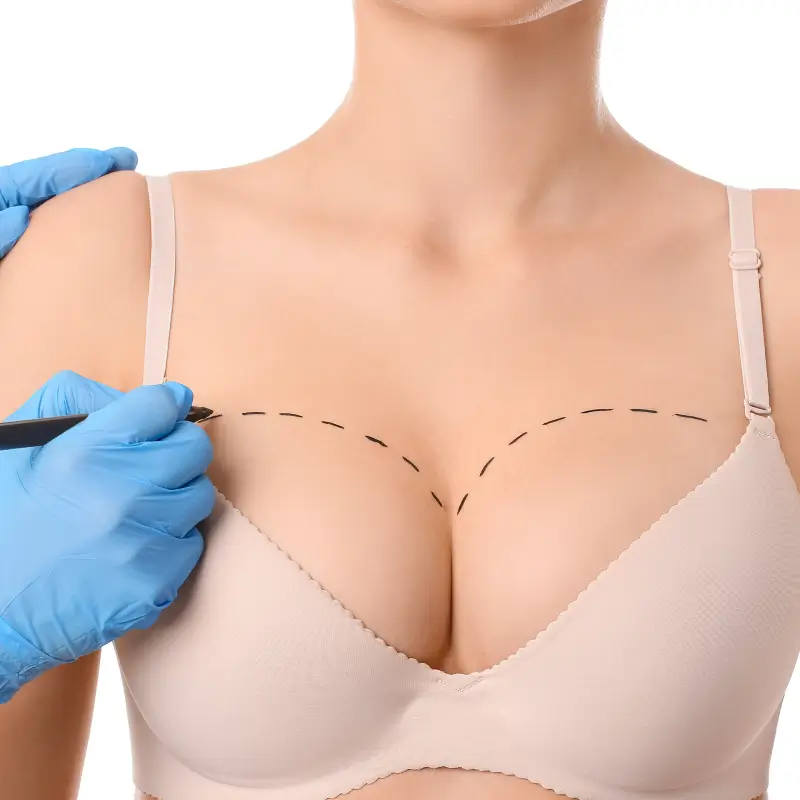
Breast upliftment, also known as mastopexy or a breast lift, is a cosmetic procedure designed to restore firmness and a youthful shape to sagging breasts. Whether due to aging, pregnancy, weight fluctuations, or genetic factors, sagging breasts can affect confidence and self-esteem. A breast lift offers a solution to address these concerns and enhance breast appearance.
What is Breast Upliftment?
Breast upliftment is a surgical procedure that involves lifting and reshaping the breasts to achieve a more youthful and aesthetically pleasing contour. The procedure involves removing excess skin, tightening the underlying tissue, and repositioning the nipple and areola to a higher position. Unlike
breast augmentation, which increases breast volume, breast upliftment focuses on improving the shape and firmness of the breasts.
Causes of Breast Sagging
Several factors can contribute to breast sagging, including:
- Aging: As we age, the skin loses its elasticity, and the supporting ligaments in the breasts weaken, leading to sagging.
- Pregnancy and Breastfeeding: Hormonal changes and increased breast volume during pregnancy and breastfeeding can stretch the skin and tissue, causing sagging.
- Weight Fluctuations: Significant weight gain or loss can impact breast volume and elasticity, leading to drooping.
- Genetics: Your genetic makeup can influence the natural shape and firmness of your breasts, making some women more prone to sagging.
- Gravity: Over time, gravity exerts a downward force on the breasts, contributing to their sagging.
Symptoms Indicating a Need for Breast Upliftment
The main indicator for considering a breast upliftment is sagging breasts. Other symptoms include:
- Drooping Breasts: The breasts may appear lower on the chest wall than desired.
- Enlarged Areolas: The areolas may stretch and become larger as the breasts sag.
- Loss of Firmness: The breasts may feel less firm and more pendulous.
The Breast Upliftment Procedure
- Consultation: The process begins with a detailed consultation with a board-certified plastic surgeon. During this visit, you'll discuss your goals, review your medical history, and determine the most suitable surgical approach.
- Surgical Techniques: Several techniques are used based on the degree of sagging and patient goals:
- Periareolar Lift: An incision around the areola, suitable for mild sagging.
- Vertical Lift: An incision around the areola extending vertically down to the breast crease, used for moderate sagging.
- Anchor Lift: Incisions around the areola, vertically down to the breast crease, and along the crease itself, ideal for severe sagging.
- Anesthesia: The procedure is typically performed under general anesthesia, ensuring you are comfortable and pain-free during the surgery.
- Procedure Details: The surgeon will remove excess skin, tighten the underlying tissue, and reposition the nipple and areola. The procedure usually lasts a few hours.
Recovery After Breast Upliftment
- Immediate Post-Operative Care: Expect swelling, bruising, and discomfort after the surgery. These symptoms are normal and can be managed with prescribed pain medication and compression garments.
- Activity Restrictions: Avoid strenuous activities and heavy lifting for several weeks. Follow your surgeon’s post-operative care instructions for optimal healing.
- Follow-Up Visits: Regular follow-up appointments are essential to monitor healing and ensure the desired results. Your surgeon will remove stitches and evaluate the outcome.
- Long-Term Results: The final results will become more apparent as swelling subsides, typically within a few months. Maintaining a stable weight and healthy lifestyle can help prolong the results.
Conclusion
Breast upliftment is a transformative procedure that can enhance your confidence by restoring a youthful and attractive breast contour. By understanding the causes of breast sagging, the procedure itself, and what to expect during recovery, you can make an informed decision about whether a breast lift is right for you. Consult with a qualified plastic surgeon to explore your options and develop a personalized treatment plan that meets your goals and expectations.
FAQs
1. Is breast upliftment painful?
The procedure is performed under anesthesia, so you won’t feel pain during surgery. Post-operative discomfort is normal but manageable with medication.
2. How long is the recovery period?
Most patients can resume light activities within a few days, but full recovery usually takes about 2-4 weeks.
3. Will there be visible scars?
Scarring is a natural part of the process but tends to fade over time. Skilled surgeons make incisions in less noticeable areas.
4. How long do the results last?
The results are long-lasting, but factors such as aging, pregnancy, and weight fluctuations can affect their longevity.
5. Can I combine a breast lift with other procedures?
Yes, many women choose to combine a breast lift with breast augmentation or reduction to achieve enhanced results.

